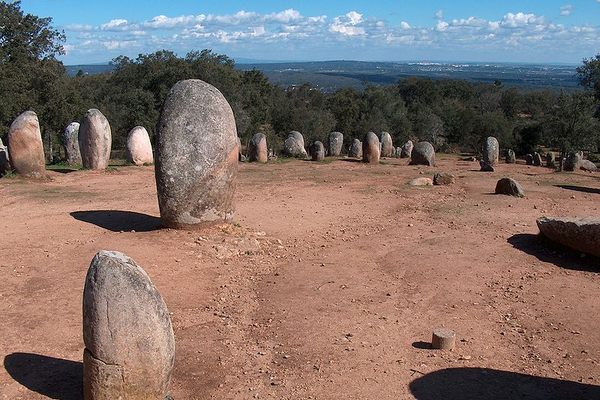AO Edited
Rujm el-Hiri
Tens of thousands of rocks make up what is thought to be a giant star calendar.
One of the more mysterious archeological sites in the Golan Heights region, Rujm el-Hiri is a wide series of piled stone rings that scientists have not been able to definitively date or decode since their discovery, although there are a number of theories.
The megalithic wonder consists of five circles of piled up basalt rocks surrounding a central cairn that was once a tomb before grave-robbers picked it clean. Other smaller stone lines connect the rings in places creating a seemingly more meaningful design. The central stack stands around 15 feet high, in contrast to the surrounding rings which are generally around 8 feet tall. When excavations at the site began they found that it had once contained a tomb, but that had been long since cleaned out, leaving nothing behind. With no organic data to sample, the actual age of the construction is impossible to determine, but it was likely created around 3000 BCE.
Thought of as the sort of Stonehenge of the area, Rujm el-Hiri has no lack of theories surrounding its use. Given the tomb at its center, some researchers have theorized that the site was related to a death ritual of some kind, possibly even being a site where the dead would be laid out to be devoured by birds. Others have suggested that the formation was some kind of ancient church to megalithic gods. However the most prevalent modern theory is that the rings were used as a celestial calendar that could measure the equinoxes and assist in primitive astronomy.
Whatever the original use for the site was, its mysterious origins continue to fuel wonder and speculation to all who make the trek to the stone rings.
Know Before You Go
Warning: This site is in an Israeli army firing zone and it is adjacent to old mine fields. Extreme caution should be taken if you're trying to reach it.

















Follow us on Twitter to get the latest on the world's hidden wonders.
Like us on Facebook to get the latest on the world's hidden wonders.
Follow us on Twitter Like us on Facebook